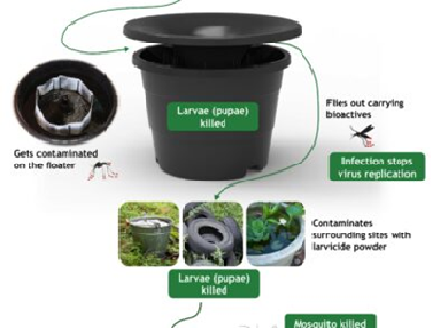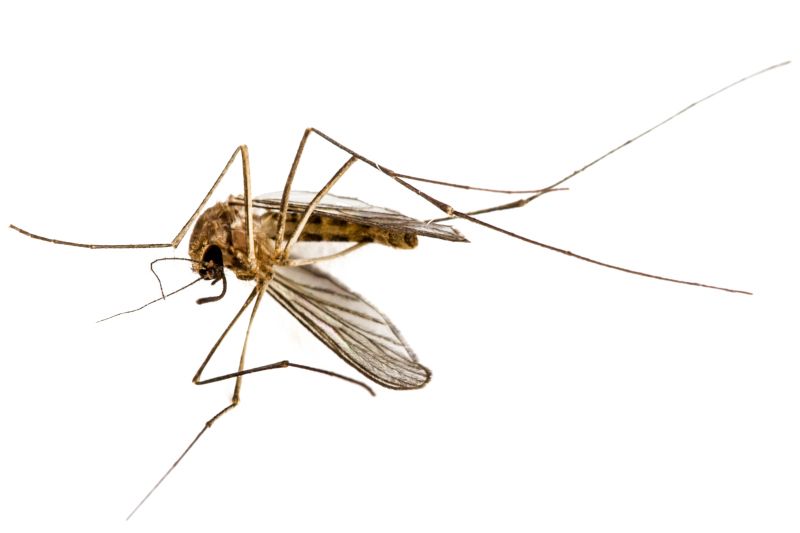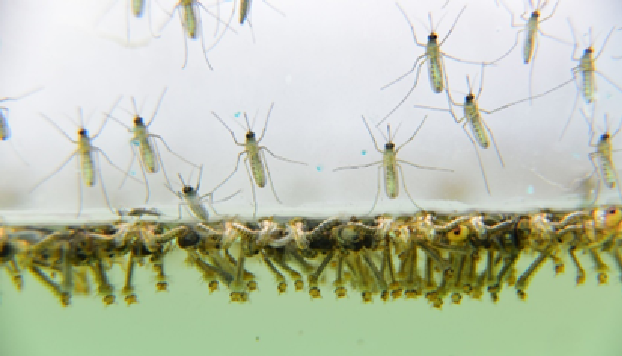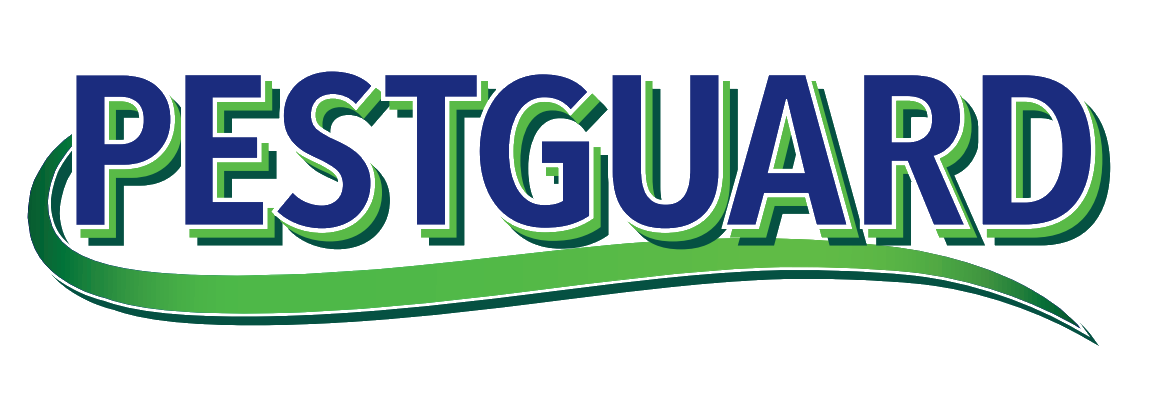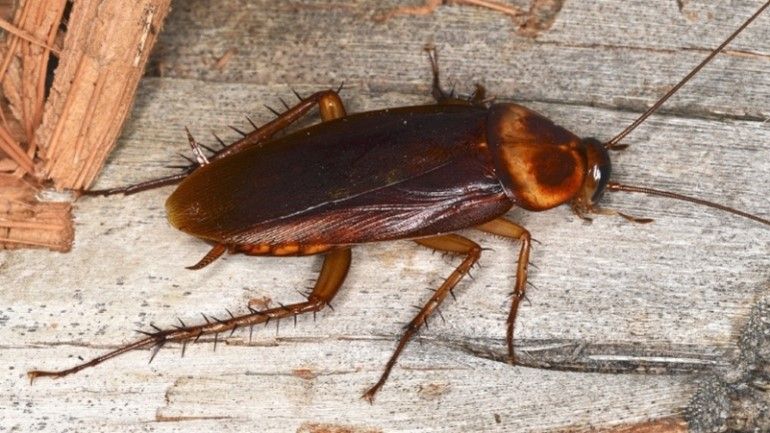Recovering from a Hurricane: Addressing Rodent and Pest Problems After the Storm
As the winds die down and the floodwaters recede, the aftermath of a hurricane often brings challenges that go beyond property damage

One of the biggest hidden threats after a storm is the surge of pests and rodents. Standing water and debris piles left in the storm’s wake create the perfect conditions for pests to thrive, leading to increased health risks and further damage to homes. Now more than ever, it’s essential to take action to protect your home and family from these unwanted invaders.
Why Pests and Rodents Become a Problem After a Hurricane
Several factors make post-hurricane environments ideal for pest infestations and rodent invasions:
- Standing Water: Floodwaters leave pools of stagnant water around homes and neighborhoods. This water becomes a breeding ground for mosquitoes, which can spread diseases such as Zika virus, West Nile virus, and dengue fever. Without proper treatment, mosquitoes can multiply quickly, turning your yard into a hotbed of activity.
- Debris Piles: Fallen trees, branches, and broken building materials create perfect hiding spots for rodents and other pests. Rats and mice, in particular, are displaced by the storm and seek new shelters—often finding their way into homes in search of food and warmth. Debris piles also attract pests like ants, spiders, and cockroaches, which can further damage your property and increase health risks.
- Disrupted Habitats: Hurricanes destroy natural habitats for many creatures, forcing them into human-made structures. As floodwaters rise, rodents are displaced from their nests, making homes and garages attractive shelters. This migration increases the risk of rodent infestations that can carry diseases, chew through wires, and contaminate food sources.
- Structural Damage: The storm’s impact can create openings in roofs, windows, and foundations, making it easier for pests and rodents to enter your home. These cracks and gaps allow unwanted visitors to slip inside unnoticed, where they can cause significant damage and spread disease.
The Dangers Posed by Post-Storm Infestations
After a hurricane, it’s not just your property that’s at risk, your health could be in jeopardy too. Here’s how pests and rodents can pose serious dangers:
- Mosquitoes: Standing water provides ideal breeding conditions for mosquitoes, which are notorious for carrying diseases like Zika and West Nile virus. With the increase in stagnant water after a storm, mosquito populations can spike rapidly, increasing the chances of being bitten and exposed to dangerous viruses.
- Rodents: Rats and mice can spread diseases such as leptospirosis, hantavirus, and salmonella. Their urine, droppings, and nesting materials can contaminate food and surfaces, posing a serious health risk. Rodents are also destructive—they chew through electrical wires, insulation, and wood, potentially causing fires and structural damage.
- Flies: With floodwater, spoiled food, and debris piles, flies breed and spread rapidly after a hurricane. They carry bacteria that can lead to food poisoning, diarrhea, and other infections, especially when food is left out or garbage accumulates.
- Termites: Storm-damaged homes can attract termites, which feed on weakened wood. If left unchecked, termites can exacerbate structural damage and cause costly repairs.
- Ants and Fire Ants: Flooding forces ants, including fire ants, to relocate. These aggressive insects often form floating masses that can survive for weeks in floodwaters. Fire ant stings are painful and can cause serious allergic reactions in some individuals.
The Importance of Taking Immediate Action
In the wake of a hurricane, it’s easy to focus on visible damage—fallen trees, broken windows, and flooded homes. But overlooking pest and rodent problems can lead to more significant issues down the road. Infestations can grow quickly, compounding the challenges you’re already facing during recovery. It’s essential to act swiftly to prevent these problems from escalating.
What Can You Do to Protect Your Home?
While it’s tempting to take matters into your own hands, professional help is often the most effective solution after a hurricane. Pestguard is here to assist you with expert advice and fast, effective pest control services to safeguard your home from the hidden dangers of post-storm infestations.
Here’s how Pestguard can help you reclaim your home:
- Comprehensive Mosquito Control: Standing water left by the storm can quickly become a breeding ground for mosquitoes. Our mosquito control services target these breeding areas, using professional-grade treatments that stop mosquitoes before they become a bigger problem.
- Rodent Exclusion and Trapping: Storm damage can create easy entry points for rodents. Pestguard specializes in rodent exclusion, sealing off your home to prevent rats and mice from getting inside. We also offer humane trapping services to remove rodents that may already have entered your property.
- Debris and Cleanup Support: Debris piles are a magnet for pests. As part of our service, we can advise you on how to clear debris safely and prevent infestations from occurring. Our team will assess vulnerable areas around your home and provide recommendations on reducing pest attractants.
- Structural Repairs: Broken windows, damaged roofs, and foundation cracks are all opportunities for pests and rodents to invade. Pestguard partners with local professionals to help secure your home, ensuring that all potential entry points are sealed.
- Termite and Ant Control: Damaged wood and flooding can lead to increased termite activity and ant invasions. Our experts can inspect your home for signs of termites and other wood-destroying pests, providing treatments that protect your property from further damage.
- Disrupted Habitats: Hurricanes destroy natural habitats for many creatures, forcing them into human-made structures. As floodwaters rise, rodents are displaced from their nests, making homes and garages attractive shelters. This migration increases the risk of rodent infestations that can carry diseases, chew through wires, and contaminate food sources.
- Structural Damage: The storm’s impact can create openings in roofs, windows, and foundations, making it easier for pests and rodents to enter your home. These cracks and gaps allow unwanted visitors to slip inside unnoticed, where they can cause significant damage and spread disease.
The Dangers Posed by Post-Storm Infestations
After a hurricane, it’s not just your property that’s at risk, your health could be in jeopardy too. Here’s how pests and rodents can pose serious dangers:
- Mosquitoes: Standing water provides ideal breeding conditions for mosquitoes, which are notorious for carrying diseases like Zika and West Nile virus. With the increase in stagnant water after a storm, mosquito populations can spike rapidly, increasing the chances of being bitten and exposed to dangerous viruses.
- Rodents: Rats and mice can spread diseases such as leptospirosis, hantavirus, and salmonella. Their urine, droppings, and nesting materials can contaminate food and surfaces, posing a serious health risk. Rodents are also destructive—they chew through electrical wires, insulation, and wood, potentially causing fires and structural damage.
- Flies: With floodwater, spoiled food, and debris piles, flies breed and spread rapidly after a hurricane. They carry bacteria that can lead to food poisoning, diarrhea, and other infections, especially when food is left out or garbage accumulates.
- Termites: Storm-damaged homes can attract termites, which feed on weakened wood. If left unchecked, termites can exacerbate structural damage and cause costly repairs.
- Ants and Fire Ants: Flooding forces ants, including fire ants, to relocate. These aggressive insects often form floating masses that can survive for weeks in floodwaters. Fire ant stings are painful and can cause serious allergic reactions in some individuals.
The Importance of Taking Immediate Action
In the wake of a hurricane, it’s easy to focus on visible damage—fallen trees, broken windows, and flooded homes. But overlooking pest and rodent problems can lead to more significant issues down the road. Infestations can grow quickly, compounding the challenges you’re already facing during recovery. It’s essential to act swiftly to prevent these problems from escalating.
What Can You Do to Protect Your Home?
While it’s tempting to take matters into your own hands, professional help is often the most effective solution after a hurricane. Pestguard is here to assist you with expert advice and fast, effective pest control services to safeguard your home from the hidden dangers of post-storm infestations.
Here’s how Pestguard can help you reclaim your home:
- Comprehensive Mosquito Control: Standing water left by the storm can quickly become a breeding ground for mosquitoes. Our mosquito control services target these breeding areas, using professional-grade treatments that stop mosquitoes before they become a bigger problem.
- Rodent Exclusion and Trapping: Storm damage can create easy entry points for rodents. Pestguard specializes in rodent exclusion, sealing off your home to prevent rats and mice from getting inside. We also offer humane trapping services to remove rodents that may already have entered your property.
- Debris and Cleanup Support: Debris piles are a magnet for pests. As part of our service, we can advise you on how to clear debris safely and prevent infestations from occurring. Our team will assess vulnerable areas around your home and provide recommendations on reducing pest attractants.
- Structural Repairs: Broken windows, damaged roofs, and foundation cracks are all opportunities for pests and rodents to invade. Pestguard partners with local professionals to help secure your home, ensuring that all potential entry points are sealed.
- Termite and Ant Control: Damaged wood and flooding can lead to increased termite activity and ant invasions. Our experts can inspect your home for signs of termites and other wood-destroying pests, providing treatments that protect your property from further damage.
Secure Your Home with Pestguard
After a hurricane, you’ve got enough on your plate—don’t let pests and rodents add to your worries. With Pestguard, you can get fast, professional help to eliminate post-storm infestations and protect your home from further damage. Our team is experienced in handling the unique challenges that come with hurricane recovery, and we’re ready to help you get back on your feet.
Don’t wait for pests and rodents to take over your home. Call Pestguard today at 941-358-3863 or visit pestguardtermite.com to schedule a post-storm pest inspection and learn more about our comprehensive pest control solutions. Protect your home, your family, and your health—let Pestguard be your partner in recovery!
After a hurricane, you’ve got enough on your plate—don’t let pests and rodents add to your worries. With Pestguard, you can get fast, professional help to eliminate post-storm infestations and protect your home from further damage. Our team is experienced in handling the unique challenges that come with hurricane recovery, and we’re ready to help you get back on your feet.
Don’t wait for pests and rodents to take over your home. Call Pestguard today at 941-358-3863 or visit pestguardtermite.com to schedule a post-storm pest inspection and learn more about our comprehensive pest control solutions. Protect your home, your family, and your health—let Pestguard be your partner in recovery!


